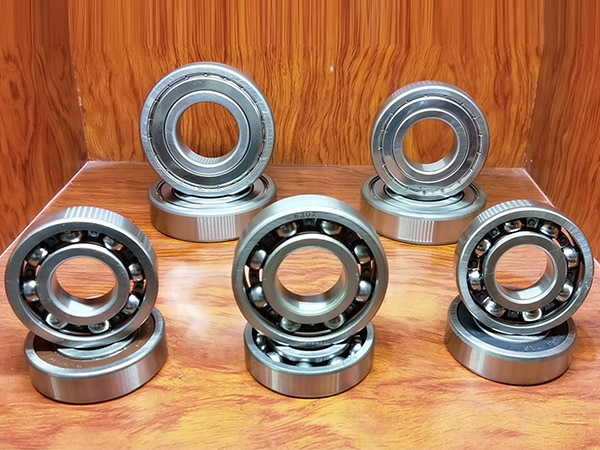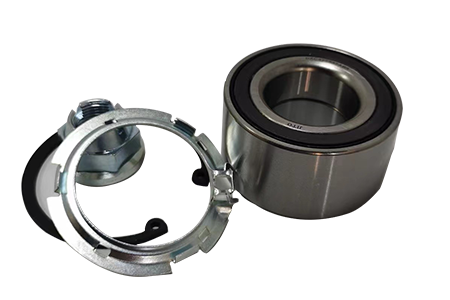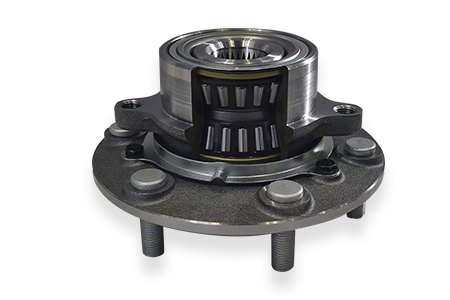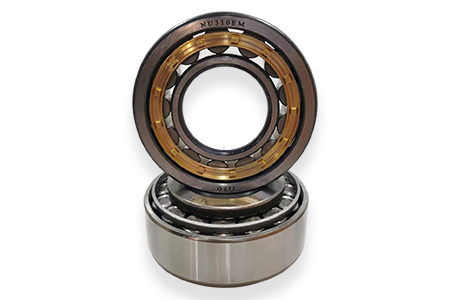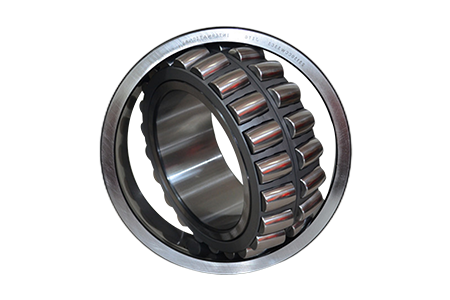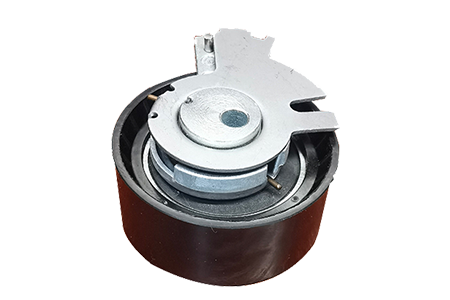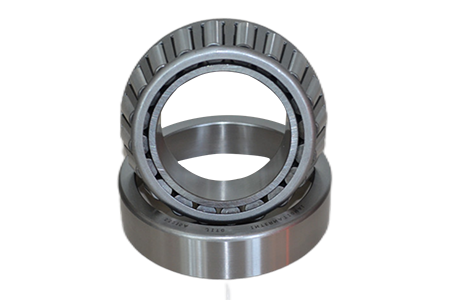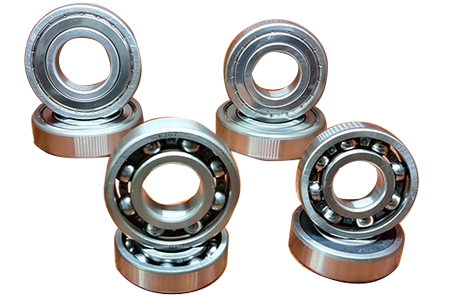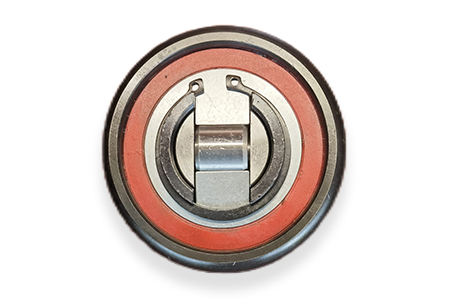Deep Groove Ball Bearings
Deep groove ball bearings are a very typical type of bearing due to their simple design, easy operation, and wide application. They are an inseparable type of bearing. The raceways of the inner and outer rings are in an arc groove form, capable of bearing radial loads and bi-directional axial loads. Their characteristics include low friction, high limit rotational speed, and the ability to operate at high speeds with low vibration and noise requirements.
| Bearing No. | Dimensions (mm) | Basic Dynamic Load Rating CR (kN) | Basic Static Load Rating (COR) (kN) | Weight (kg) | ||
| d | D | B | ||||
| 6002 | 15 | 32 | 9 | 5.85 | 2.85 | 0.030 |
| 6003 | 17 | 35 | 10 | 6 | 3.25 | 0.04 |
| 6004 | 20 | 42 | 12 | 9.38 | 5.03 | 0.068 |
| 6005 | 25 | 47 | 12 | 10.1 | 5.83 | 0.079 |
| 6006 | 30 | 55 | 13 | 13.2 | 8.3 | 0.113 |
| 6007 | 35 | 62 | 14 | 16.2 | 10.4 | 0.149 |
| 6008 | 40 | 68 | 15 | 17.03 | 11.70 | 0.184 |
| 6009 | 45 | 75 | 16 | 21.09 | 14.77 | 0.230 |
| 6010 | 50 | 80 | 16 | 22.02 | 16.25 | 0.257 |
| 6011 | 55 | 90 | 18 | 26.61 | 20.07 | 0.383 |
| 6012 | 60 | 95 | 18 | 31.66 | 24.22 | 0.382 |
| 6013 | 65 | 100 | 18 | 32.06 | 24.89 | 0.410 |
| 6014 | 70 | 110 | 20 | 38.59 | 30.43 | 0.576 |
| 6015 | 75 | 115 | 20 | 40.18 | 33.18 | 0.622 |
| 6016 | 80 | 125 | 22 | 47.54 | 39.79 | 0.822 |
| 6017 | 85 | 130 | 22 | 50.75 | 42.89 | 0.892 |
| 6018 | 90 | 140 | 24 | 58.02 | 49.78 | 1.013 |
| 6019 | 95 | 145 | 24 | 57.79 | 50.09 | 1.156 |
| 6020 | 100 | 150 | 24 | 64.46 | 56.13 | 1.620 |
| 6021 | 105 | 160 | 26 | 71.92 | 63.32 | 1.520 |
You can download PDF for details.
- Seal type: Open, ZZ, 2RS
- Material: Chrome steel GCr15
- Precision: P0, P2, P5, P6, P4
- Clearance: C0, C2, C3, C4, C5
- Cage material: Brass, steel, nylon, etc.
Deep groove ball bearings are widely used in automobiles, machinery, tools, motors, equipment, agricultural machinery, and more.

How can bearing accuracy be distinguished?
Bearing accuracy levels are denoted as P0, P6, P5, P4, and P2, ranging from low to high precision. Here's a breakdown of these accuracy levels:
- P0: Applicable for rotational precision greater than 10 μm in bearing systems such as the speed-changing mechanism of ordinary machine tools, feed mechanism, speed-changing mechanism of automobiles, tractors, and other commonly used machinery.
- P6: Suitable for precision within 5-10 μm in bearing systems with rotational speeds of m or higher, such as the front support of an ordinary lathe using level 5 and the rear support using level 6.
- P4: Ideal for precision less than 5 μm in ultra-precision machinery with high rotational speeds, including precision coordinate boring machines, gear systems of precision grinding machines, and other precision machinery.
How to Choose a Bearing?
Bearing accuracy levels are denoted as P0, P6, P5, P4, and P2, ranging from low to high precision. Here's a breakdown of these accuracy levels:
- Understand the load requirements of bearings in your industry.
- Determine the rotational speed requirements for bearings in your industry.
- Identify the lubrication method suitable for your bearing needs.
What is the bearing load and load capacity?
Bearing load is typically defined as the reactive force exerted on the bearing by the components during use. When selecting the appropriate bearing for your application, it is crucial to first determine the bearing's load capacity.

